Input interpretation

5-chloro-1-methyl-1H-imidazole
Chemical names and formulas

formula | C_4H_5ClN_2 name | 5-chloro-1-methyl-1H-imidazole IUPAC name | 5-chloro-1-methylimidazole alternate names | 1H-imidazole, 5-chloro-1-methyl- | 1-methyl-5-chloroimidazole | 5-chloro-1-methyl-imidazole | 5-chloro-1-methylimidazole mass fractions | C (carbon) 41.2% | Cl (chlorine) 30.4% | H (hydrogen) 4.32% | N (nitrogen) 24%
Lewis structure
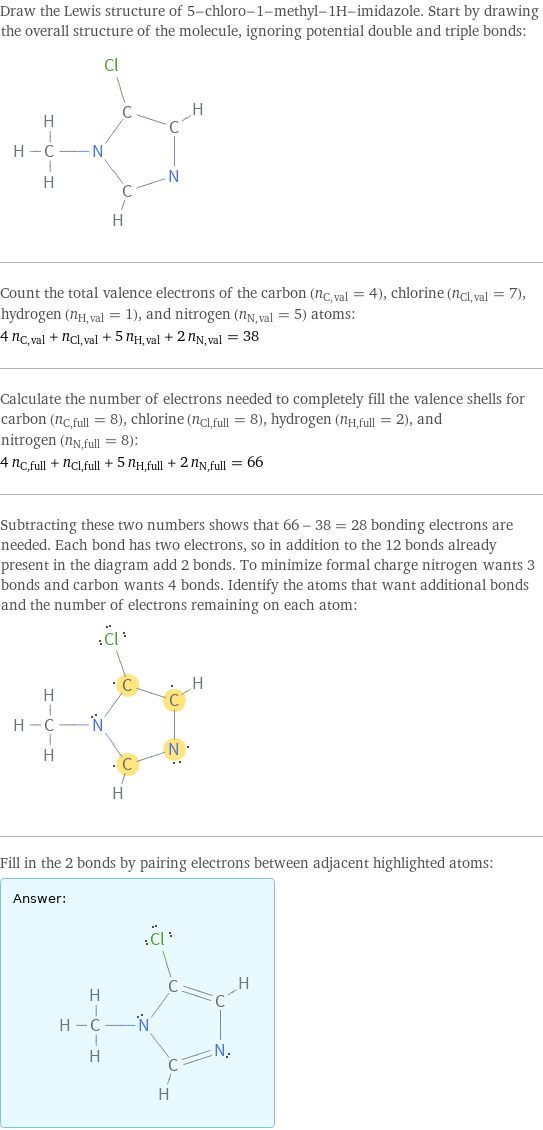
Draw the Lewis structure of 5-chloro-1-methyl-1H-imidazole. Start by drawing the overall structure of the molecule, ignoring potential double and triple bonds: Count the total valence electrons of the carbon (n_C, val = 4), chlorine (n_Cl, val = 7), hydrogen (n_H, val = 1), and nitrogen (n_N, val = 5) atoms: 4 n_C, val + n_Cl, val + 5 n_H, val + 2 n_N, val = 38 Calculate the number of electrons needed to completely fill the valence shells for carbon (n_C, full = 8), chlorine (n_Cl, full = 8), hydrogen (n_H, full = 2), and nitrogen (n_N, full = 8): 4 n_C, full + n_Cl, full + 5 n_H, full + 2 n_N, full = 66 Subtracting these two numbers shows that 66 - 38 = 28 bonding electrons are needed. Each bond has two electrons, so in addition to the 12 bonds already present in the diagram add 2 bonds. To minimize formal charge nitrogen wants 3 bonds and carbon wants 4 bonds. Identify the atoms that want additional bonds and the number of electrons remaining on each atom: Fill in the 2 bonds by pairing electrons between adjacent highlighted atoms: Answer: | |
3D structure
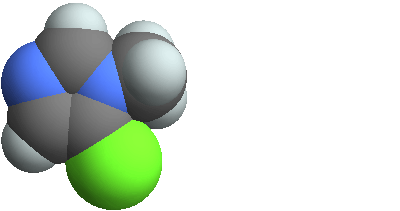
3D structure
Basic properties
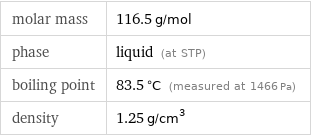
molar mass | 116.5 g/mol phase | liquid (at STP) boiling point | 83.5 °C (measured at 1466 Pa) density | 1.25 g/cm^3
Units

Liquid properties (at STP)

density | 1.25 g/cm^3 refractive index | 1.511
Units

Chemical identifiers
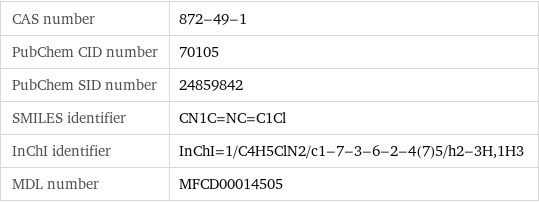
CAS number | 872-49-1 PubChem CID number | 70105 PubChem SID number | 24859842 SMILES identifier | CN1C=NC=C1Cl InChI identifier | InChI=1/C4H5ClN2/c1-7-3-6-2-4(7)5/h2-3H, 1H3 MDL number | MFCD00014505
NFPA label

NFPA label
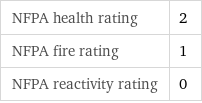
NFPA health rating | 2 NFPA fire rating | 1 NFPA reactivity rating | 0
Safety properties

flash point | 96.11 °C